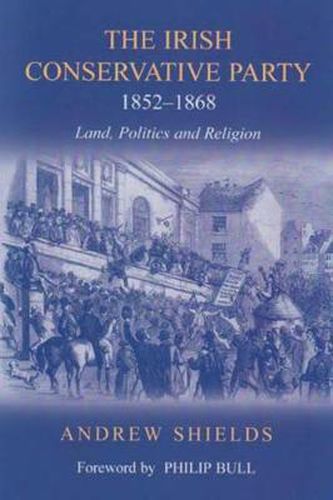Readings Newsletter
Become a Readings Member to make your shopping experience even easier.
Sign in or sign up for free!
You’re not far away from qualifying for FREE standard shipping within Australia
You’ve qualified for FREE standard shipping within Australia
The cart is loading…






The Irish Conservative party has been a neglected topic among Irish historians. This study of the party between 1852 and 1868 examines the question of whether there was an ‘indigenous’ Irish Conservatism, different both in tone and content from its English counterpart. It considers the ‘high politics’ of the Irish Conservative party and the complex ways in which the party interacted with the principal forces opposed to it in Irish society, in particular, the Roman Catholic Church. The author also looks at the social composition of the party, the elite of the Irish Conservative party and their relationship with the party leadership at Westminster. As the principal party of the Irish landowners, the Irish Conservatives had an internal unity unmatched by either the Liberal party or the Irish Independent party. Throughout this period Irish landlords retained their predominant position within Irish society. They controlled Irish local government and dominated the Irish parliamentary representation. As a body, they strongly supported the Conservatives. Their influence had indeed, in some respects, been strengthened during the Famine years, with the decline and demise of O'Connell’s nationally organised and widely supported Repeal Association. In 1859, for example, the Irish Conservative party won a majority of the seats in Ireland.
$9.00 standard shipping within Australia
FREE standard shipping within Australia for orders over $100.00
Express & International shipping calculated at checkout
The Irish Conservative party has been a neglected topic among Irish historians. This study of the party between 1852 and 1868 examines the question of whether there was an ‘indigenous’ Irish Conservatism, different both in tone and content from its English counterpart. It considers the ‘high politics’ of the Irish Conservative party and the complex ways in which the party interacted with the principal forces opposed to it in Irish society, in particular, the Roman Catholic Church. The author also looks at the social composition of the party, the elite of the Irish Conservative party and their relationship with the party leadership at Westminster. As the principal party of the Irish landowners, the Irish Conservatives had an internal unity unmatched by either the Liberal party or the Irish Independent party. Throughout this period Irish landlords retained their predominant position within Irish society. They controlled Irish local government and dominated the Irish parliamentary representation. As a body, they strongly supported the Conservatives. Their influence had indeed, in some respects, been strengthened during the Famine years, with the decline and demise of O'Connell’s nationally organised and widely supported Repeal Association. In 1859, for example, the Irish Conservative party won a majority of the seats in Ireland.